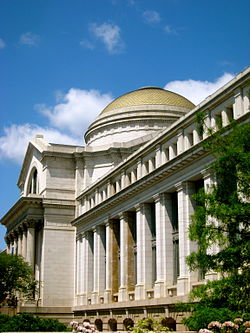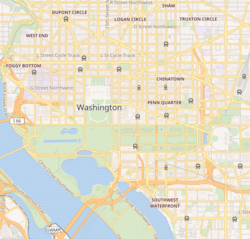National Museum of Natural History
natural history museum in Washington, D.C. From Wikipedia, the free encyclopedia
Remove ads
The National Museum of Natural History is a natural history museum on the National Mall in Washington, D.C., United States. It is administered by the Smithsonian Institution. Admission is free and the museum is open 364 days a year.


The museum's collections total over 500 million specimens of plants, animals, fossils, minerals, rocks, meteorites, and human cultural artifacts (made objects). With 7.4 million visitors in 2009, it is the most visited of all of the Smithsonian museums.[2] It is home to about 185 professional natural history scientists – the largest group of scientists dedicated to the study of natural and cultural history in the world.
The main building includes a popular "Insect Zoo" and an IMAX theater.
Remove ads
Collections and research
The museum includes a collections storage facility in Suitland, Maryland. The museum has a marine science research facility in Ft. Pierce, Florida, and field stations in Belize, Alaska, and Kenya. The museum has seven research departments:
- Anthropology
- Botany
- Entomology
- Invertebrate zoology
- Mineral sciences
- Paleobiology
- Vertebrate zoology
Staff collect specimens of fossils, minerals, rocks, plants and animals, tools and artworks. There are a total of 5,285,754 on-line specimen records are available from this work, and a total of 126 million individual specimens.[3] Trained people look after these finds, and keep the collections in good condition.
The NMNH claims to have the largest, most comprehensive natural history collection in the world.[3]
Remove ads
Links with other organizations
The museum has research links with a number of U.S. government agencies, which have staff working with and at the museum. These include the Department of the Interior (U.S. Geological Survey Biological Resources Division), the Department of Agriculture (Systematic Entomology Laboratory), the Department of Commerce (National Marine Fisheries Service Systematics Laboratory), and the Department of Defense (Walter Reed Biosystematics Unit).[4]
Remove ads
References
Wikiwand - on
Seamless Wikipedia browsing. On steroids.
Remove ads


